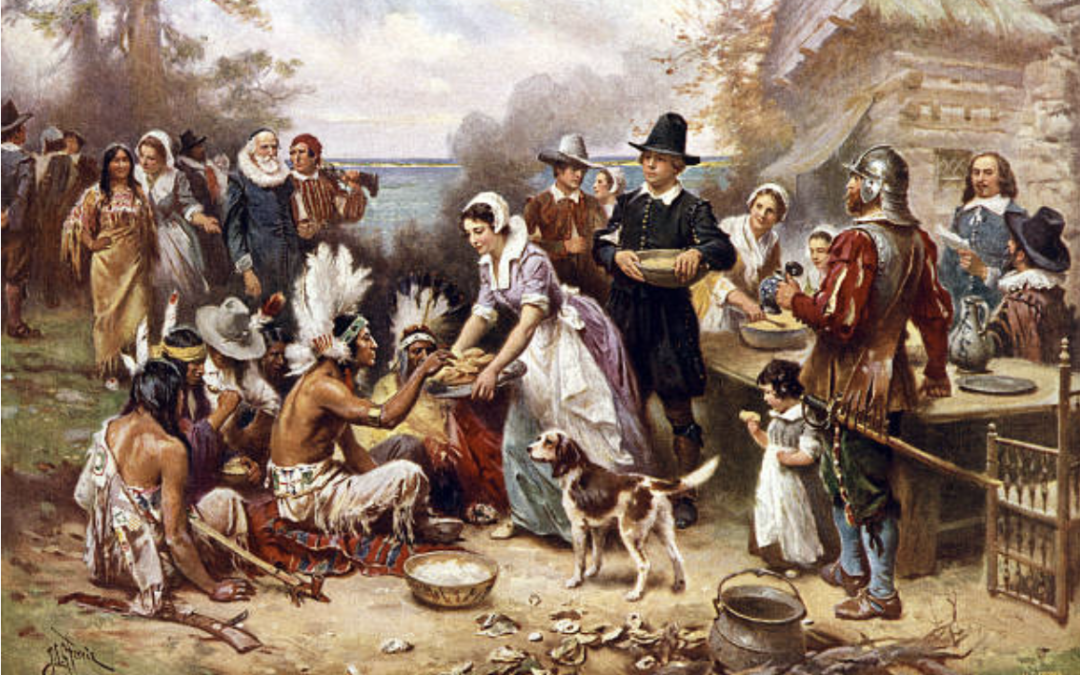
The Pilgrims of Plymouth Rock, 1620, fame were the outsiders, the disenfranchised, the minority. They left England and Holland for freedom of religion. They sailed to the new world. As Separatists and non-conformists (against the Church of England), King James (the same man who authorized the Bible translation in 1611) was determined to remove them from his country for sedition and rebellion.
Since the Pilgrims had been persecuted for their beliefs, we would expect them to be sensitive to anyone being persecuted, marginalized, or oppressed. Certainly they would never force anyone against their will. They would never do to others what King James had done to them.
Within a year of their arrival in Plymouth, the Pilgrims made an alliance with the First Nations leader Massasoit. Even though European explorers from a number of different nations had abused Indians, killing some, taking others captive, and the Pilgrims had stolen food from them, a fragile peace held for a long time. This was a credit to both the Pilgrim leaders and Massasoit.
“In 1676, fifty-six years after the sailing of the Mayflower, a similarly named but far less famous ship, the Seaflower, departed from the shores of Pilgrim New England. Like the Mayflower, she carried a human cargo. But instead of 102 potential colonists, the Seaflower was bound for the Caribbean with 180 Native American who were slaves.”
How could this happen? What’s the story behind the story? What of this quirk of history? Massasoit sensed early on that his future, power and control was tied to the well-being of the Pilgrims, whose superior culture (cannons, navigational skill, metallurgy, sailing ships, printing) was obvious. On the other hand, without Massasoit’s help, all 102 of those who arrived to Plymouth Rock in 1620 would have died.
The famous scene, referred to as The First Thanksgiving – the Pilgrims dressed in their wide-brim black hats and buckled shoes – and Massasoit and his Wampanoags with their food – was indeed an historic first. But politics was involved. Massasoit was at a numerical disadvantage with a rival Indian nation. So he needed the alliance with the Pilgrims.
However, over the 56 years of peace there had been enough humiliations and tensions both directions that the younger, First Nations generation was ready for a fight. Massasoit’s son, Philip, led his people to war against the foreigners. Philip’s War lasted 14 months. In 1675, the population of New England’s First nations peoples – according to Philbrick (The Mayflower; by Nathaniel Philbrick; Thorndike Press, 2006) – was 70,000. The war cost 5000 lives, mostly First Nations people. In terms of percentage of people killed, Philip’s War was twice as bloody as the American Civil War and seven times more lethal that the American Revolutionary War.
According to Philbrick, the First Nations people committed such violence against all the English that they — including the Pilgrims — retaliated, took many prisoners and sent them away on the Seaflower.
We are convinced we would never do to others what has been done to us. Though embarrassed, we find we do. Many times in life we hold a certain position (like the Pilgrims surely believed in the wrongness of what they suffered in Europe). Yet enough injustice and violence occurred that the Pilgrims felt justified in sending Native Americans away from their own homeland. The oddities and sinfulness of human nature create the quirks of history.
Source: Nathaniel Philbrick’s book Mayflower.


Recent Comments